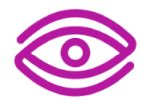What is the effect of using traditional Chinese medicine to treat chronic obstructive pulmonary disease?
This article discusses the effectiveness of using traditional Chinese medicine to treat chronic obstructive pulmonary disease (COPD) and hopes to be helpful to everyone. Please don't forget to bookmark this site. What are the advantages of using traditional Chinese medicine to treat COPD? The advantage of using traditional Chinese medicine to treat COPD lies in its ability to simultaneously address multiple diseases that patients with COPD often have, such as cardiovascular diseases, diabetes, and digestive disorders.
When patients have multiple diseases and need to take a large amount of medication, their compliance may not be good if they are prescribed additional medications during their visit. Traditional Chinese medicine can better address these issues. It can simultaneously address these diseases, reduce the frequency of oral medication for patients, and regulate patients' lungs, kidneys, spleen, and phlegm through traditional Chinese medicine. It can also promote blood circulation and resolve blood stasis.
Through the combined effects of these medications, it can improve patients' physical condition, reduce the risk of acute exacerbations, and significantly improve their quality of life. What are the characteristics of traditional Chinese medicine in the treatment of chronic obstructive pulmonary disease (COPD)?
Yang Liuxiang: Does traditional Chinese medicine have any specific characteristics? Su Huiping: Traditional Chinese medicine treatment also distinguishes between the acute and remission phases. During the acute phase, there is often fever and worsened coughing and wheezing. The treatment principle of traditional Chinese medicine is the same - treat the symptoms during the acute phase and focus on the root cause during remission. Stabilizing the condition is the most important during the acute phase. Traditional Chinese medicine mainly focuses on clearing the lungs, resolving phlegm, stopping coughing, and alleviating wheezing. It emphasizes the importance of individualized treatment based on syndrome differentiation.
Traditional Chinese medicine has its advantages, and Western medicine has its own advantages. COPD is a chronic disease, and during the severe late stage, repeated acute exacerbations are a significant factor contributing to increased mortality. Therefore, when patients experience dangerous conditions such as respiratory failure during acute exacerbations, we recommend using some Western medical treatments, including respiratory support such as ventilators. These treatments are crucial for saving patients' lives, including the use of antibiotics since infections are an important factor in exacerbating COPD.
In the treatment of critically ill patients, traditional Chinese medicine also has its advantages. For example, "Shenfu Injection," "Qingkailing Injection," and "Angong Niuhuang Pill" are all rescue medications for critically ill patients. In addition, patients who receive antibiotics may experience related side effects such as nausea and diarrhea, which can affect liver and kidney function in the elderly. At this time, traditional Chinese medicine can be used for individualized treatment based on syndrome differentiation, including intravenous, oral, and herbal medicine, to reduce the side effects of medication. Traditional Chinese medicine emphasizes holistic treatment to achieve therapeutic goals through overall adjustment.
Traditional Chinese medicine attaches more importance to the "root cause" during the remission phase. By tonifying the lung, spleen, and kidney functions, it enhances the patient's resistance to external pathogenic factors, reducing the frequency of COPD exacerbations. This is crucial because both traditional Chinese medicine and Western medicine agree that the higher the frequency of exacerbations, the faster the decline in lung function, which leads to worsening of the condition or increased risk of a life-threatening situation. Therefore, reducing the frequency of exacerbations is a very important goal of traditional Chinese medicine treatment during the remission phase. There are various treatment methods, which emphasize comprehensive approaches including medication therapy. Medication therapy includes oral medications, topical medications, and intravenous medications. For example, during the relatively stable remission phase, patients may still experience symptoms such as cough and excessive phlegm. Treatment is based on personalized differentiation of syndromes and appropriate medication selection. External treatment methods commonly used in traditional Chinese medicine include applying herbal medicated plasters, which reflect the concept of disease prevention in traditional Chinese medicine. When Chinese herbal medicine enters the affected area through the body's acupoints, it can enhance the efficacy of the medication, strengthen the body's immune system, and reduce exacerbations. Nowadays, many traditional Chinese medicine hospitals carry out plaster treatment during the "Sanfu" and "Sanyang" periods. This is a traditional treatment method in Chinese medicine. Our hospital has been practicing this method for a long time, and we have collected feedback from patients and compiled statistically significant data. Overall, it does have a good effect on preventing and treating COPD, reducing symptoms, reducing exacerbations, and delaying disease progression.
Is it better to see a Western doctor or a Chinese doctor for chronic obstructive pulmonary disease (COPD)? During the acute phase of treating emphysema, Western medicine can be used. It is necessary to use sensitive antibiotics, expectorants, and bronchodilators such as aminophylline and β2 agonists. If there are allergies present, corticosteroids can be used in combination with traditional Chinese medicine for relief during the period. Additionally, respiratory function exercise should be conducted. Moderate physical exercise such as walking or practicing Tai Chi can be appropriate. It is important to eliminate and avoid the effects of smoke, dust, and irritating gases on the respiratory tract.
How effective is the treatment of chronic obstructive pulmonary disease with traditional Chinese medicine? Let's stop here for the introduction. Thank you for taking the time to read the content on this website. Don't forget to search for more information about the effectiveness of traditional Chinese medicine in treating chronic obstructive pulmonary disease on this website.





Leave a Reply